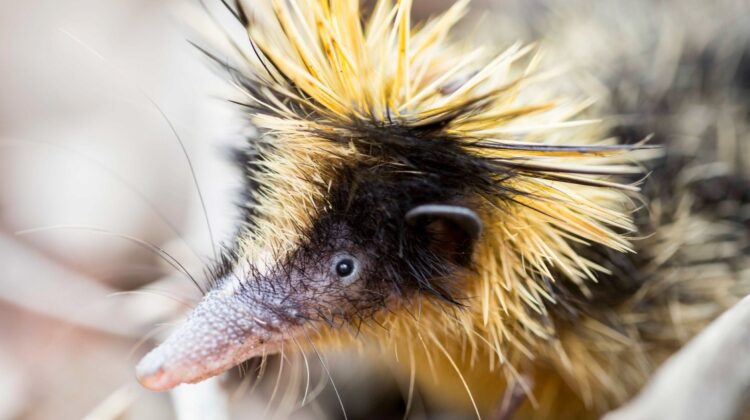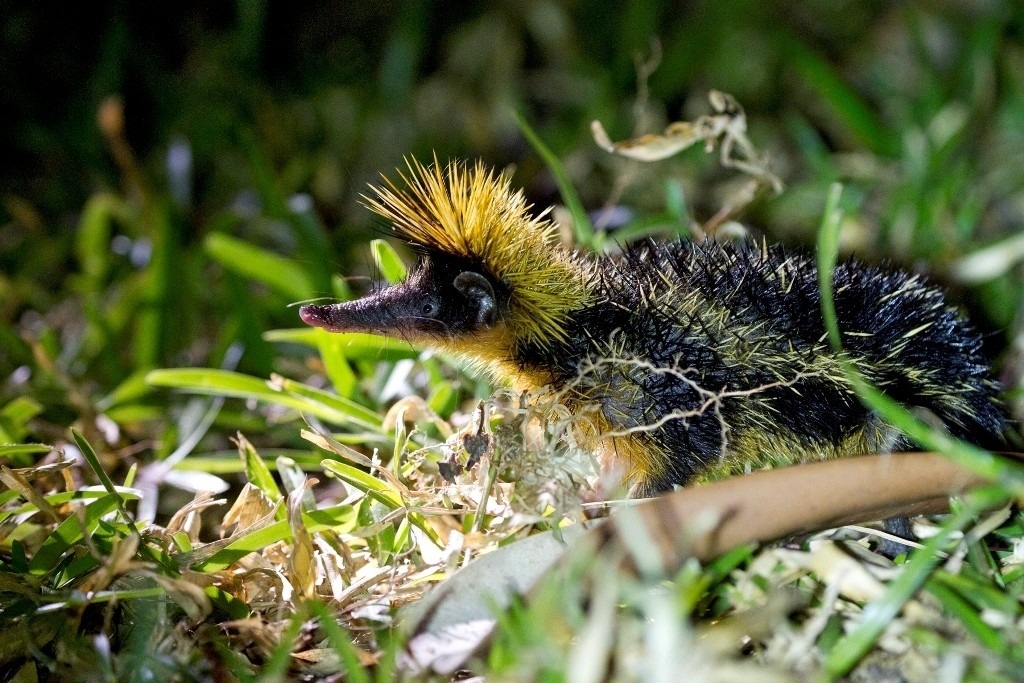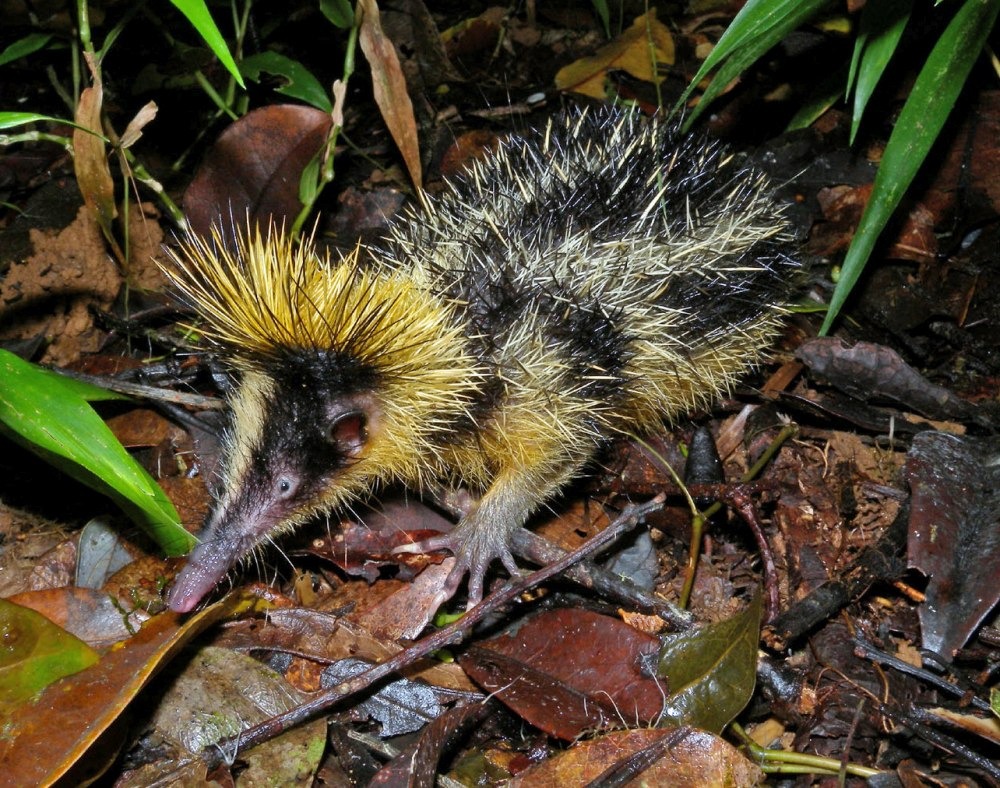
Madagascar is a fascinating island nation in the Indian Ocean that is home to many unique species of plants and animals. One of the most interesting animals found in Madagascar is the streaked tenrec, a small mammal known for its striking appearance.

The streaked tenrec (Hemicentetes semispinosus) is a member of the tenrec family, which is made up of about 30 different species of small, insect-eating mammals found only in Madagascar. The streaked tenrec is known for its distinctive black and white stripes, which run down its back and onto its legs.
But the streaked tenrec’s most striking feature is its spines. Unlike the spines of a porcupine, which are modified hairs, the spines of the streaked tenrec are modified skin. The spines are actually made up of a type of keratin, the same material that makes up our hair and nails.

When threatened, the streaked tenrec will curl up into a ball, exposing its spines to potential predators. The spines are sharp and can easily puncture the skin of an attacker, making the tenrec a formidable opponent. However, the spines are not used for offense, but rather as a defense mechanism to protect the tenrec from harm.
The streaked tenrec is primarily active at night, and spends most of its time on the forest floor, where it hunts for insects and other small prey. It has poor eyesight, but a keen sense of smell and hearing, which help it locate its prey in the dark.

The streaked tenrec is an important part of the ecosystem in Madagascar, and plays a key role in controlling insect populations. However, like many other species in Madagascar, the streaked tenrec is threatened by habitat loss and deforestation. Efforts are underway to protect the species and its habitat, but more needs to be done to ensure its survival.

In conclusion, the streaked tenrec is a fascinating and unique animal found only in Madagascar. With its distinctive stripes and spines, it is an important part of the island’s ecosystem and a testament to the incredible diversity of life on Earth. Let’s work together to protect this amazing species and its habitat for generations to come.

Leave a Reply